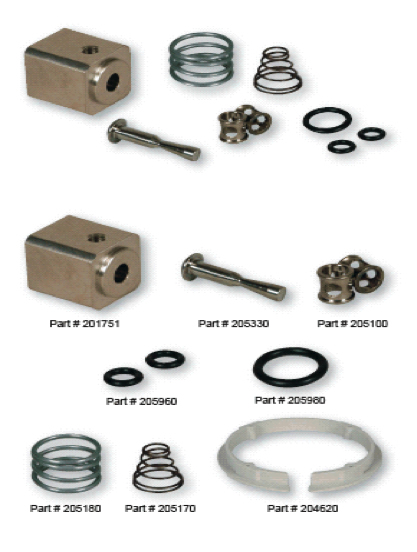Across industries, check valves play an essential role in preventing reversal flow of a media. Check valves remain open when media is flowing in the proper direction, and close when the flow reverses. The most common flow control mechanisms within check valves include ball, piston and poppet. Which one is right for your application?
Common Check Valve Types
Ball check valves use a closing mechanism in the form of a ball to block flow. It can be designed with a spring to activate ball position, or without. They are available in a wide range of metals and plastic resins metal and other materials. Ball check valves are best suited for high pressure applications involving viscous media and are an affordable solution for most applications. Compared to piston check valves, ball check valves offer lower flow restriction.
Piston check valves employ a weighted piston to prevent back flow. As forward flow enters the valve, the piston is raised by the pressure. When the flow stops or reverses, the piston seal is forced onto the valve seat by back flow and spring force. Piston valves are best suited for applications where leakage is unacceptable and are ideal for low flow rates and low viscosity media.
Poppet check valves feature a poppet at the end of a stem or sleeve used as the flow-checking device. These valves often include a spring to help close it prior to fluid flow reversal. The flat bottom of the poppet makes it very effective at maintaining fluid pressure, though they are not recommended for high pressure applications.
Selecting the Right Check Valve
The stopping mechanism is just one of many decisions in picking the right check valve for your application. You can quickly navigate the complex array of valve attributes to find the exact valve solution your application requires using our valve configurator. Once you’ve completed your option selection, you’ll be able to compare CAD models and detailed product drawings, then download and import exactly what you need.
Not sure where to start? Contact our team today and we’ll help determine which check valve is best suited for your specific application.

